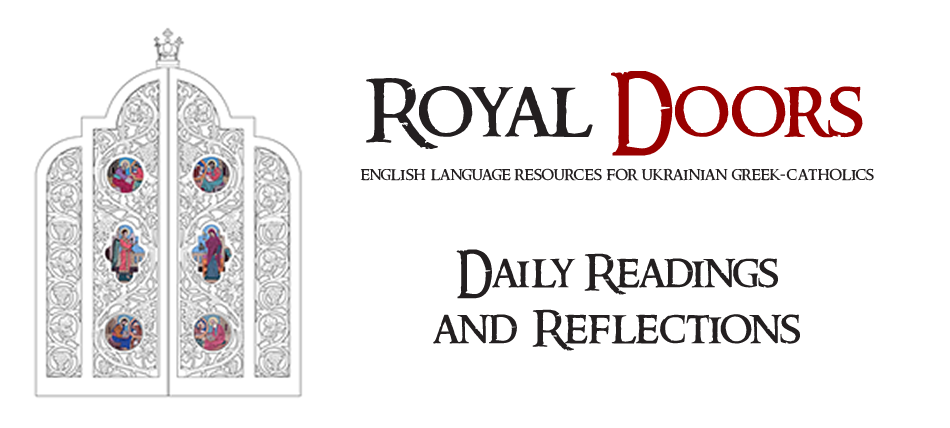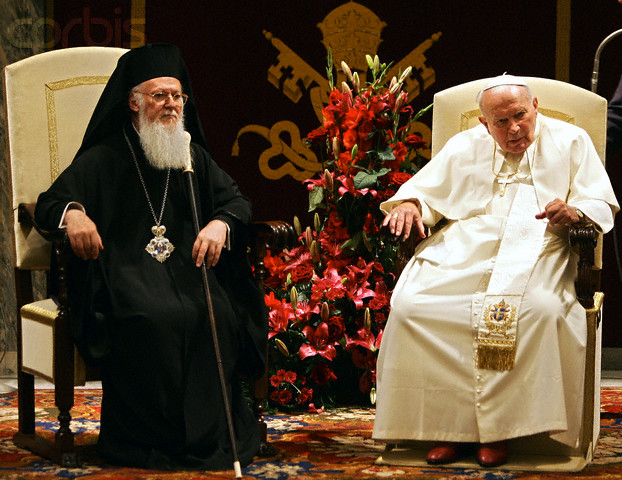As this marks the fiftieth appearance of the Both Lungs column, it seems appropriate to learn more about the context in which Saint John Paul II made the remark from which this column takes its title and its theme. As it turns out, he used the phrase many times. However, one which seems most relevant to this column was in the encyclical Ut Unum Sint [That They May Be One] given on May 25, 1995. Ut Unum Sint looked ahead to the year 2000 and the Jubilee of the Incarnation of the Son of God. It builds on the call for Christian unity made by the Second Vatican Council. It recalls the conversion of the Ukrainian people in 988 as an example of how accepting, and even encouraging diversity, is essential in the Church.
Referring to the celebration of the Millennium of the Baptism of Ukraine in 988, John Paul II called it a key event in the evangelization of the world. “The great Slav nations of Eastern Europe owe their faith to this event. In this perspective an expression which I have frequently employed finds its deepest meaning: the Church must breathe with her two lungs! In the first millennium of the history of Christianity, this expression refers primarily to the relationship between Byzantium and Rome.”
St. John Paul II used this event as a keystone on which the ecumenical movement could be (rest). “If we then consider that the salvific event which took place on the banks of the Dnieper goes back to a time when the Church in the East and the Church in the West were not divided, we understand clearly that the vision of the full communion to be sought is that of unity in legitimate diversity.” Praising the evangelical work of the first millennium, St. John Paul II called it a period when “the development of different experiences of ecclesial life did not prevent Christians, through mutual relations, from continuing to feel certain that they were at home in any Church, because praise of the one Father, through Christ in the Holy Spirit, rose from them all, in a marvelous variety of languages and melodies; all were gathered together to celebrate the Eucharist.
Referencing an earlier encyclical, St. John Paul II continued his theme of diversity being a vital element of the Church’s life; an element which is necessary if the Church is to be once again united. “In my Encyclical Epistle Slavorum Apostoli [Apostles of the Slavs], I recalled that this was the very reason why Saints Cyril and Methodius laboured to translate the ideas of the Bible and the concepts of Greek theology in the context of very different historical experiences and ways of thinking. They wanted the one word of God to be ‘made accessible in each civilization’s own forms of expression.’They recognized that they could not therefore ‘impose on the peoples assigned to their preaching either the undeniable superiority of the Greek language and Byzantine culture, or the customs and way of life of the more advanced society in which they had grown up.’”
Saint Cyril himself defended his work of translating the Bible into a Slavic vernacular. “Do not all breathe the air in the same way? And you are not ashamed to decree only three languages (Hebrew, Greek and Latin), deciding that all other peoples and races should remain blind and deaf! Let every tongue confess that Jesus Christ is Lord, to the glory of God the Father.”
Looking ahead to greater unity between the Orthodox and Catholic churches, St. John Paul II reminds us of how diversity was the norm in ancient times. “In each local Church this mystery of divine love is enacted, and surely this is the ground of the traditional and very beautiful expression ‘Sister Churches’, which local Churches were fond of applying to one another. For centuries we lived this life of ‘Sister Churches’, and together held Ecumenical Councils which guarded the deposit of faith against all corruption. And now, after a long period of division and mutual misunderstanding, the Lord is enabling us to discover ourselves as ‘Sister Churches’ once more, in spite of the obstacles which were once raised between us”.
When, in 1596, the Ukrainian Catholic Church was formed, some of the richness of the East was brought back into the Roman fold. St. John Paul II noted how this, and other communion with the Christian East is essential. “Contact with this glorious tradition is most fruitful for the Church. As the Council (Vatican II) points out: ‘From their very origins the Churches of the East have had a treasury from which the Church of the West has amply drawn for its liturgy, spiritual tradition and jurisprudence.’”
In modern times, historic reunion is taking place on a limited scale as Anglican communities in England accept full communion with Rome. The Apostolic Constitution Anglicanorum Coetibus [ Anglican congregations] published in 2009, makes liturgical provision for personal ordinariates for Anglicans entering into full communion with the Catholic Church. As with the Ukrainian Catholic Church, and, indeed, all the Eastern churches, unity brings further diversity. These former Anglican communities are granted the facility to, “…celebrate the holy Eucharist and other sacraments, the Liturgy of the Hours and other liturgical celebrations according to the liturgical books proper to the Anglican tradition…as a precious gift nourishing the faith of the members of the ordinariate and as a treasure to be shared.” (author’s italics)
Ecumenism, unity, diversity, richness, reunion, tradition. Praying together with united voices. This is the Church breathing through Both Lungs.
This piece first appeared in The Prairie Messenger. Reprinted with permission.


